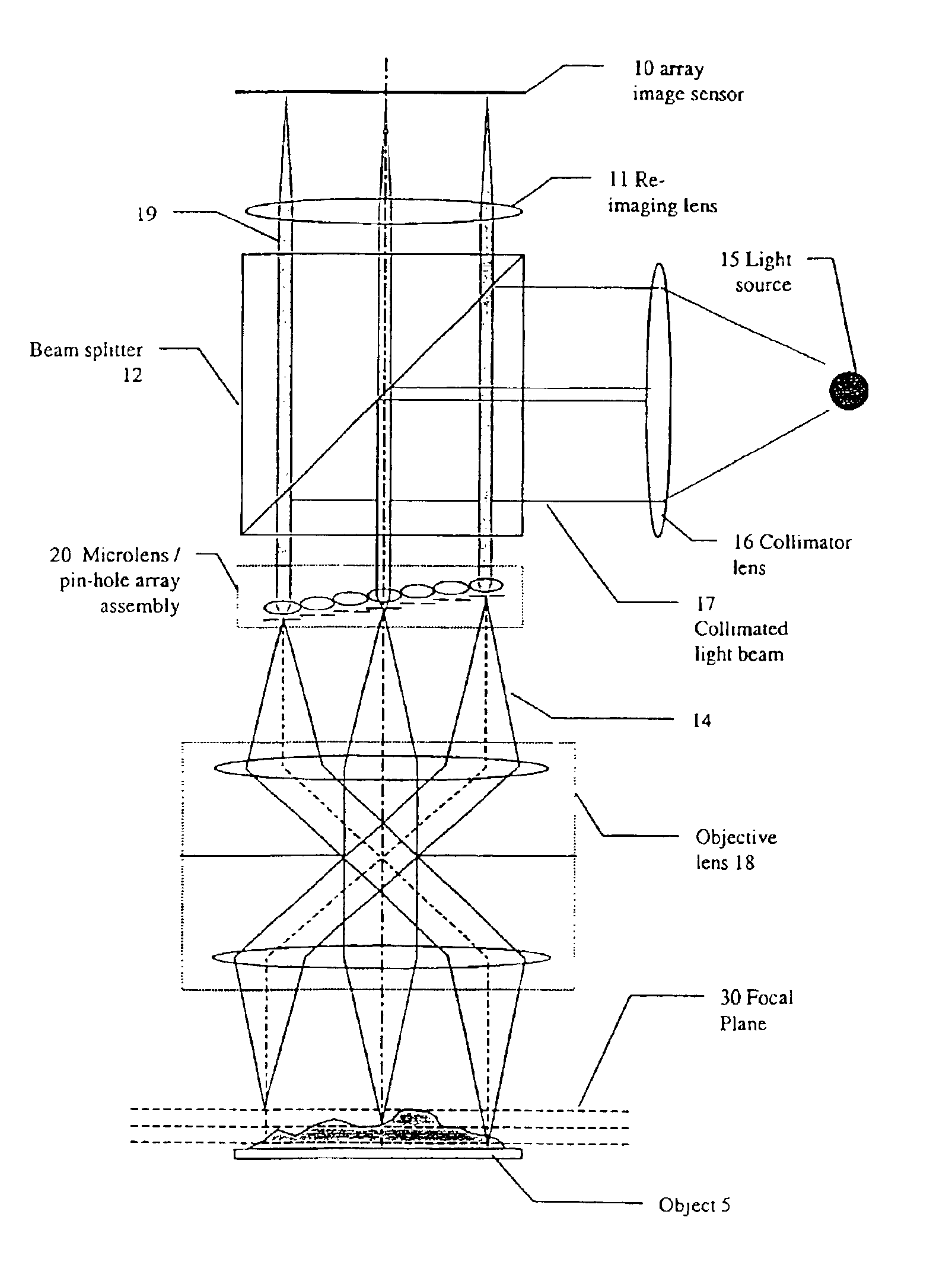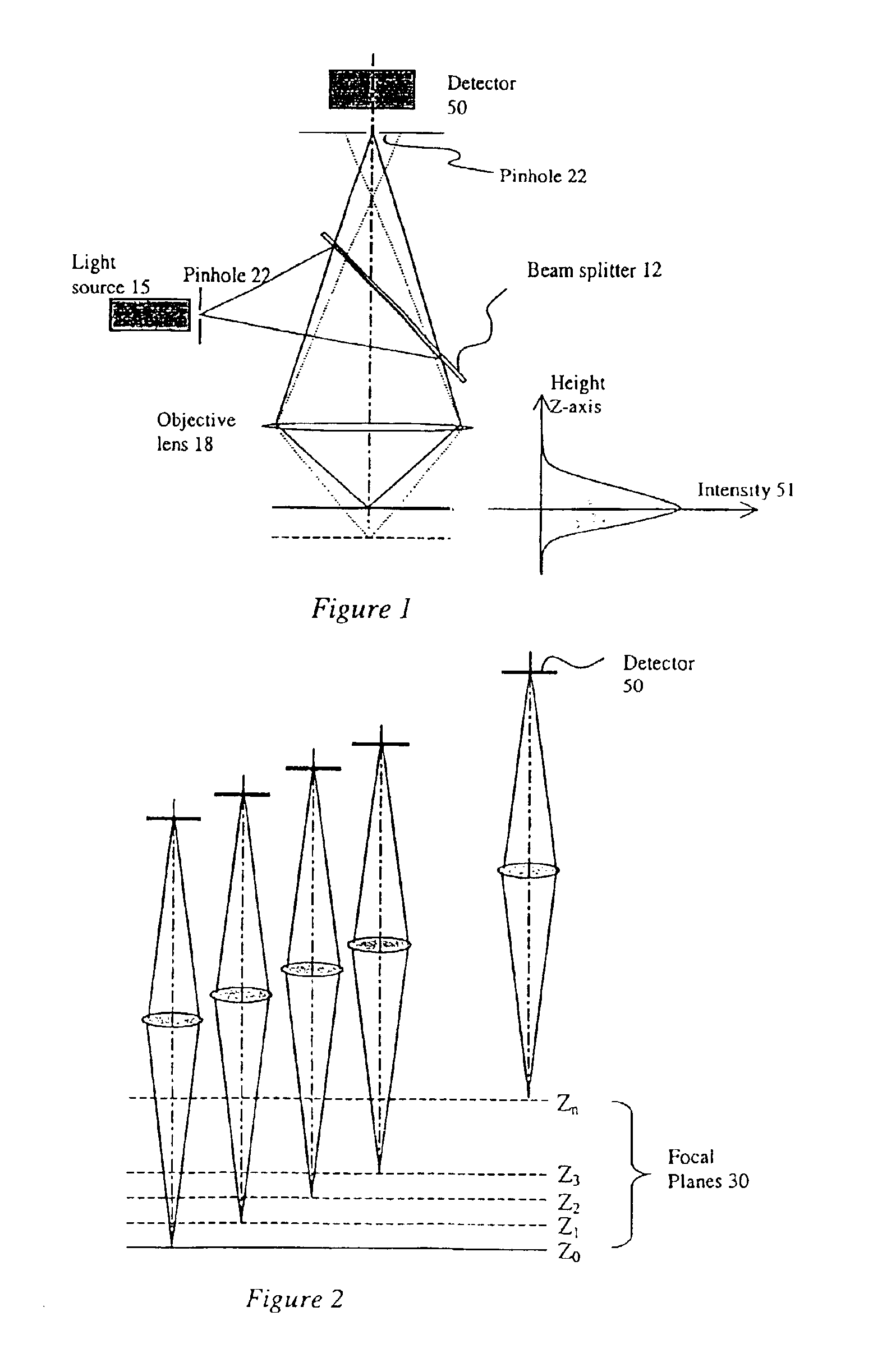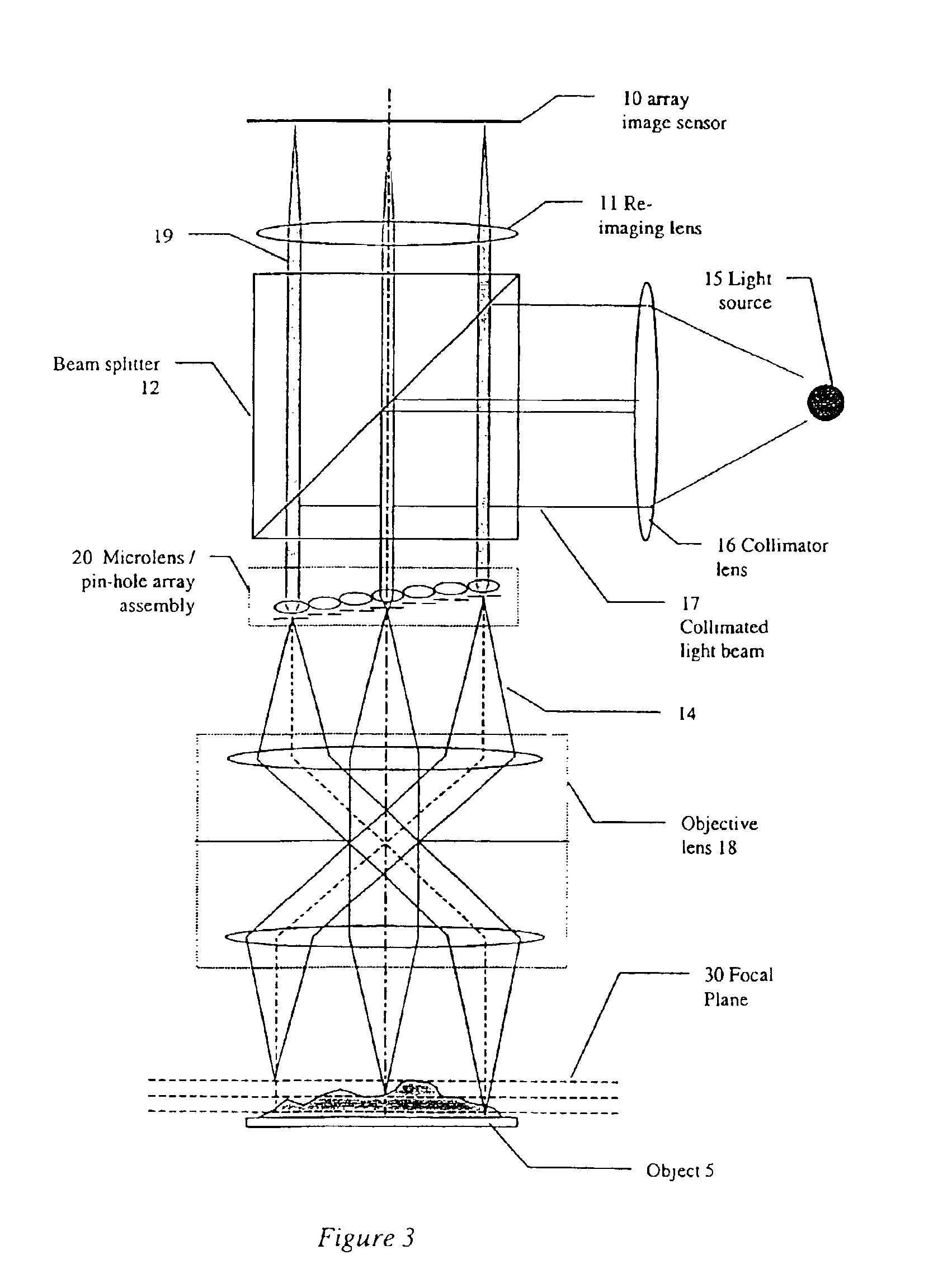Confocal imaging
- Summary
- Abstract
- Description
- Claims
- Application Information
AI Technical Summary
Benefits of technology
Problems solved by technology
Method used
Image
Examples
Embodiment Construction
view of a microlens and pinhole array for use in the confocal imaging system of FIG. 3.
[0029]FIG. 4(b) is a cross-sectional view A—A′ of the microlens and pinhole array of FIG. 4(a).
[0030]FIG. 5 shows an alternative design of the microlens and pinhole array for use in the confocal imaging system of FIG. 3.
[0031]FIG. 6 is an illustration showing the relationship between the image and the object space.
[0032]FIG. 7 shows a block diagram of the image sensor, processing and control modules in accordance with the present invention.
[0033]FIG. 8 is a flow chart showing the major steps of computing the 3D map of an object.
DESCRIPTION OF A SPECIFIC EMBODIMENT
[0035]Referring to FIG. 3, there is shown a confocal imaging system for inspecting an object 5 to determine the three dimensional surface structure of the object. The confocal imaging system comprises a light source 15, and a collimator lens 16 for refracting light from the light source into a collimated light...
PUM
 Login to View More
Login to View More Abstract
Description
Claims
Application Information
 Login to View More
Login to View More - R&D
- Intellectual Property
- Life Sciences
- Materials
- Tech Scout
- Unparalleled Data Quality
- Higher Quality Content
- 60% Fewer Hallucinations
Browse by: Latest US Patents, China's latest patents, Technical Efficacy Thesaurus, Application Domain, Technology Topic, Popular Technical Reports.
© 2025 PatSnap. All rights reserved.Legal|Privacy policy|Modern Slavery Act Transparency Statement|Sitemap|About US| Contact US: help@patsnap.com



